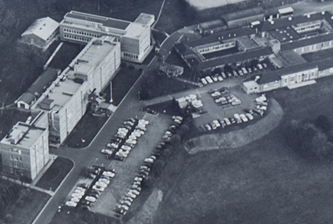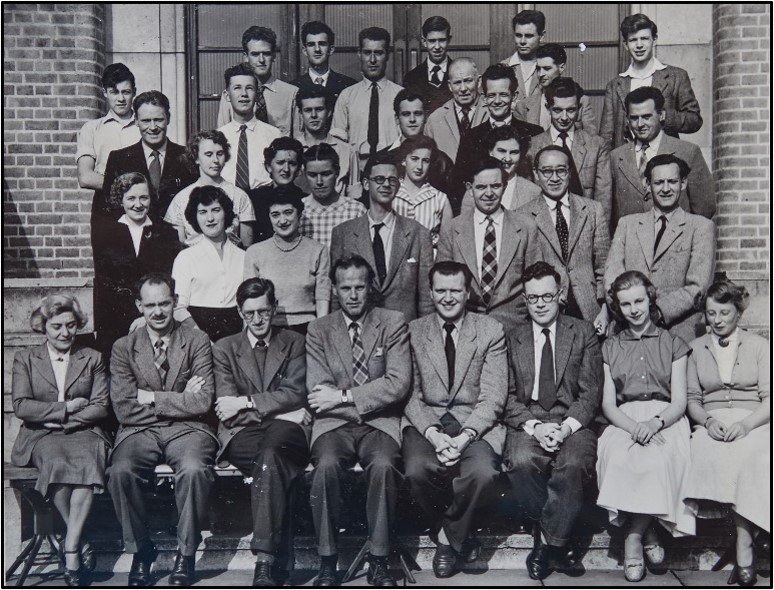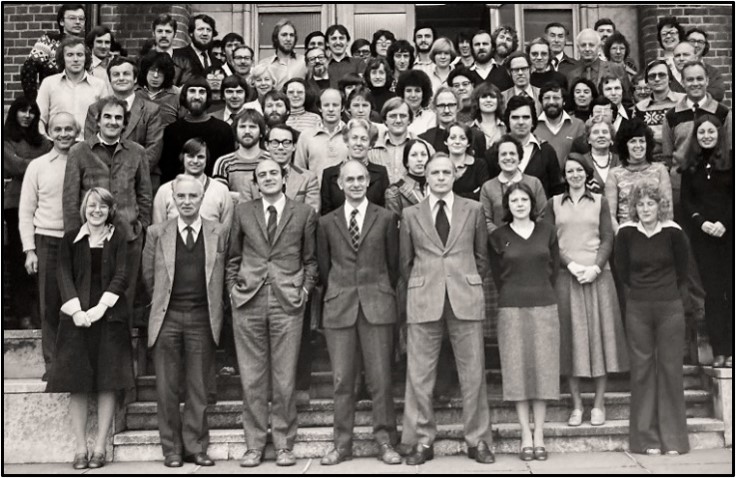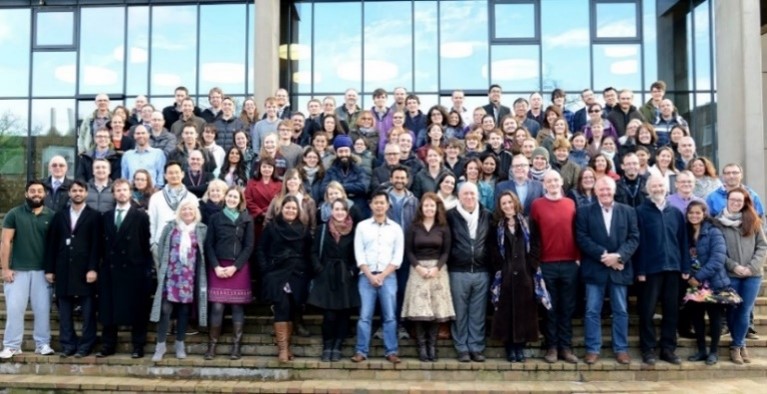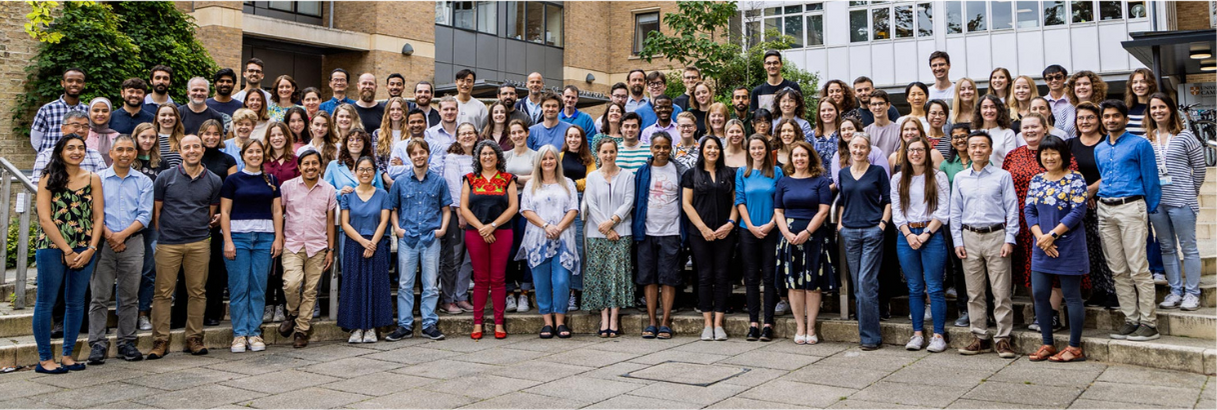The MRC Toxicology Unit has been carrying out research into the links between exposure to toxicants and adverse outcomes for over 75 years.
The Unit was established by the Medical Research Council (MRC) in the spring of 1947 under the directorship of Dr John Barnes for the experimental investigation of toxicological problems, with a specific reference to industrial hazards. Barnes was a medical experimental pathologist who had briefly worked on penicillin with Sir Howard Florey in Oxford.
Establishment of the Unit turned out to be an inspired and long-term initiative by the MRC at a time when new pesticides and other chemical products were being developed and widely used. Initially the Unit was accommodated at the Porton Down Chemical Defence Establishment in Wiltshire, but in 1950 it was moved to join other Units at the MRC Laboratories in Carshalton, Surrey; the first of three moves.
The mission statement of the Unit was, and still is, not only to study mechanisms of particular chemicals of toxic concern but to learn more about normal physiological and biochemical processes by investigating physical and chemical induced injury. This multidisciplinary approach combining molecular studies with toxicology has underpinned the philosophy of the Unit to date.
Toxicology Unit at Carshalton: 1950 - 1993
Beryllium was of increasing industrial importance in the 1950s, but initial studies from the Unit showed that continuous or repeated exposure caused bone tumours and toxic liver damage. Subsequently followed by pioneering studies of weed killers, insecticides, mercury, lead and acrylamide, the associated toxicology of such chemicals were now health and regulatory concerns. This led to the recognition of the Unit as a major international centre for toxicology expertise by the World Health Organisation (WHO) in 1967.
Major contributions included studies on the effects of cold-shock and how that developed into tissue damage, the discovery that nitrosamines, that can be produced during drug manufacturing, found in tobacco products and some foods, are highly carcinogenic, and the hazards of plant toxins, such as ricin and mycotoxins like aflatoxin. Together, these broadened the interest of the Unit beyond just industrial chemicals.
In 1976, Dr Tom A Connors from the Cancer Research Institute was appointed Unit Director following the untimely death of Barnes. Many of the research interests continued or were introduced including the consequences of DNA methylation by nitrosamines, aflatoxin carcinogenicity, delayed neuropathy caused by organophosphorus pesticides, toxicity of mercury/cadmium, biomonitoring of exogenous and indigenous chemical adducts with DNA in humans and the demonstration of the suicidal destruction of cytochrome P450 during metabolism of many chemicals.
Research expertise of asbestos fibres from the MRC Pneumoconiosis Unit in Wales and particulates, sulphur dioxide and other atmospheric pollutants and particulates from the Clinical Toxicology Unit in St Bartholomew’s Hospital, London were incorporated into the Toxicology Unit.
In the late 1980s, the MRC decided to move the Unit to a university with a medical school to establish a more interdisciplinary research centre.
Toxicology Unit at Leicester: 1993 – 2020
Following the appointment of a new Director with an industrial background, Dr Lewis L Smith, the Unit was moved to a purpose-built institute, the Interdisciplinary Research Centre for Mechanisms of Human Toxicity at the University of Leicester. This also accommodated university research groups with interests that complemented toxicology. The Unit was one of the first laboratories to introduce toxicogenomics with gene arrays being printed in purpose-built facilities.
The Unit undertook new major studies on the risk to patients treated with tamoxifen; a hormone therapy for breast cancer, and the health significance of the possibility of endometrial cancer for women as a result. New areas of research evolved including susceptibility to xenobiotics, pulmonary toxicology, neurotoxicology with a focus on stroke and dementia, cancer treatment and chemoprevention and chemically-mediated programmed cell death (apoptosis). The focus of the Unit was broadening to focus not only on toxicological issues of occupational, food and environmental chemicals, but also drugs and studies related to direct clinical issues.
Professor Pierluigi Nicotera from the University of Konstanz became Director in 2000 following the return of Lewis Smith to industry. Nicotera had a clinical background and scientific interest in cell death, especially in neurology. The Unit’s research redirected towards more innovative and modern approaches to toxicology with upgraded microscopy, laser micro-dissection and proteomic facilities, and towards more fundamental molecular studies and their relevance to human disease and treatment, with the initiation of a clinical-based programme with the university’s medical school on B-cell lymphomas and leukaemias.
To ensure strong interaction of the Unit with mainstream toxicology, a nationwide scheme was initiated (the Integrative Toxicology Training Partnership, ITTP) whereby the MRC acted as a hub to fund and train PhD students in molecular toxicology to build future expertise for the UK.
Professor Anne E Willis from the University of Nottingham was appointed Unit Director in 2010. Professor Willis came to the Unit with a considerable reputation in cancer cell biology and drug treatment, particularly with respect to RNA biology and understanding the role of post-transcriptional control. These skills and knowledge have since been directed at many drug-safety and environmental hazards. These include a cross Unit programme on the mesothelioma-inducing potential of carbon nanotubes, and novel studies to explore the on and off target toxicities of RNA-based therapeutics.
The Unit also continues with its research surrounding fundamental exposure-associated disease processes, in conjunction with many national and international collaborators.
In 2018 the UKRI MRC Unit transferred to University of Cambridge and in 2020 physically relocated from Leicester to the refurbished Gleeson Building, on Tennis Court Road in central Cambridge.
Toxicology Unit at Cambridge: 2020 onwards
The toxicology research in the Unit impacts major areas of socio-economic importance – namely drug development and disease that result from exposure to toxic agents and environmental hazards, which has grown to include tyre and brake wear and microplastics. The Unit continues to generate novel information that enhances successful drug design and develops outcome models that can be shared with industrial and regulatory partners.
To translate the mechanistic biology into drugs that can directly benefit the public, a number of industry partnerships have been developed. Notably, the Unit partners with a number of companies including AstraZeneca, GlaxoSmithKline and GE Healthcare, which continues to be an important factor in keeping our research relevant to clinical and industrial issues.
In addition, researchers have gained greater understanding of the number of diseases that result from toxic injury and have provided innovative therapeutic avenues for translation of the discovery science into a clinical setting, such as RNA-based therapeutics, immune modulators and cell-based therapies.
Since its formation in 1947, the fundamental objectives of the Unit have not changed, but instead the remarkable scientific progress is now reflected in the cutting-edge expertise and facilities now available to the Unit.
Read more about the Unit's history in this scientific essay.
To discover more about our current research, head over to our research pages, facility pages and latest news and read more about the groups currently working at the Unit. To explore more selected research stories, look through our public engagement pages and visit our growing blog.



